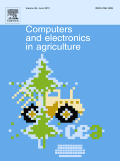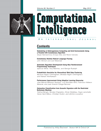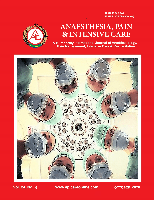
JOURNAL OF CLINICAL MONITORING AND COMPUTING
Scope & Guideline
Advancing clinical knowledge through innovative monitoring technologies.
Introduction
Aims and Scopes
- Clinical Monitoring Technologies:
The journal publishes research on various clinical monitoring devices, including non-invasive and invasive techniques that enhance patient safety and treatment efficacy. - Anesthetic Depth Monitoring:
A significant focus is on the development and validation of tools to monitor anesthetic depth, including EEG-based systems and indices that predict patient responses to anesthesia. - Artificial Intelligence and Machine Learning:
Research on the application of AI and machine learning methods for predicting clinical outcomes, optimizing monitoring processes, and improving decision-making in anesthesia and critical care. - Hemodynamic Monitoring:
The journal covers advancements in hemodynamic monitoring, including novel techniques for assessing cardiac output, blood pressure, and fluid responsiveness in various surgical contexts. - Postoperative Care and Outcomes:
Research addressing the implications of monitoring technologies on postoperative care, including pain management, recovery trajectories, and the prediction of complications. - Innovative Monitoring Approaches:
The journal emphasizes innovative methodologies in monitoring, such as wearable technologies, remote monitoring systems, and the integration of real-time data analysis into clinical practice.
Trending and Emerging
- Wearable Monitoring Technologies:
There is a growing trend towards the use of wearable devices for continuous monitoring of vital signs, allowing for real-time data collection and analysis in various clinical settings. - Artificial Intelligence Applications:
The incorporation of AI in clinical monitoring is on the rise, with studies exploring its potential in predicting adverse events, automating monitoring processes, and enhancing decision-making. - Patient-Centered Outcomes:
Research increasingly emphasizes patient-centered outcomes, focusing on how monitoring technologies can improve recovery experiences and reduce postoperative complications. - Integration of Big Data and Analytics:
The journal is seeing more studies that utilize big data analytics to enhance monitoring practices, leading to improved predictive capabilities and tailored patient management. - Multimodal Monitoring Approaches:
There is a trend towards multimodal monitoring, combining various technologies and techniques to provide a comprehensive view of patient status and improve clinical decision-making. - Remote and Telemonitoring:
The COVID-19 pandemic has accelerated interest in remote monitoring solutions, with studies focusing on telemonitoring strategies to manage patients in outpatient settings or during recovery.
Declining or Waning
- Traditional Invasive Monitoring Techniques:
There is a noticeable decline in the publication of studies focused solely on traditional invasive monitoring techniques, as more emphasis is placed on non-invasive and continuous monitoring methods. - Basic Physiological Monitoring:
Research focusing on basic physiological parameters without advanced analytical techniques is becoming less common, as the field shifts towards more sophisticated and data-driven approaches. - General Anesthesia Practices:
Studies that merely describe general anesthesia practices without introducing new monitoring technologies or methodologies are less frequently published, indicating a move towards more innovative research. - Static Monitoring Methods:
The journal is seeing fewer articles on static monitoring methods, with a shift towards dynamic and continuous monitoring that provides real-time data to clinicians. - Single-Center Studies:
There is a reduction in the number of single-center studies, as the journal encourages more multicenter collaborations to validate findings and improve generalizability.
Similar Journals

Journal of Anesthesia
Advancing Anesthesia: Insights for the Future of Pain ManagementJournal of Anesthesia, published by SPRINGER JAPAN KK, is a leading peer-reviewed journal dedicated to advancing the field of anesthesiology and pain medicine. With an ISSN of 0913-8668 and an E-ISSN of 1438-8359, the journal features high-quality research articles, reviews, and clinical studies that encompass both the scientific and practical aspects of anesthesia. Situated in Japan and categorized within the Q2 quartile for Anesthesiology and Pain Medicine, it holds a commendable rank of #33 out of 136 in Scopus, placing it in the top 24% of its category. The impact factor is under continuous evaluation, reflecting the journal's commitment to innovative research contributions. Published annually since its inception in 1987 and continuing through 2024, the journal provides crucial insights and discussions pertinent to the contemporary challenges faced in medicine. While it offers traditional subscription services, its significance in the realm of anesthesiology makes it a vital resource for researchers, professionals, and students seeking to explore the latest advancements and practices in the discipline.

Journal of Civil Structural Health Monitoring
Empowering engineers with cutting-edge insights into structural health.The Journal of Civil Structural Health Monitoring, published by SPRINGER HEIDELBERG, is a premier academic journal dedicated to advancing the field of civil and structural engineering, with a specific focus on the health monitoring of infrastructure systems. With an ISSN of 2190-5452 and an E-ISSN of 2190-5479, the journal has established itself as a leading source of rigorous research, evidenced by its impressive Q1 rankings in both Civil and Structural Engineering and Safety, Risk, Reliability, and Quality categories for 2023. As a widely respected platform, the journal offers researchers and practitioners access to high-impact studies, innovative technologies, and insights into the ongoing efforts to enhance infrastructure resilience. Despite its lack of an open-access model, the journal's content is accessible through institutional libraries, ensuring that a wide audience of engineers and scientists can benefit from the latest advancements. With its converged years from 2011 to 2024, the journal continues to play a vital role in shaping best practices and policy decisions in civil engineering, making it an invaluable resource for professionals, scholars, and students alike.

Frontiers in Remote Sensing
Elevating research standards in Physics, Astronomy, and beyond.Frontiers in Remote Sensing is an innovative open-access journal published by FRONTIERS MEDIA SA, dedicated to advancing the field of remote sensing through high-quality research and groundbreaking studies. Launched in 2020, this journal has quickly established itself as a pivotal platform for scientists and researchers working in the spheres of Physics and Astronomy and Biochemistry, Genetics, and Molecular Biology. With impressive rankings in Scopus, including a 68th percentile standing in Physics and Astronomy, it provides a vibrant forum for discussions on new methodologies, applications, and technological advancements in remote sensing. The journal is committed to facilitating knowledge dissemination by providing fully open access to its content, ensuring that useful scientific insights are readily available to a global audience. As it converges towards its initial evaluation period (2020 to 2024), Frontiers in Remote Sensing aims to solidify its role as a key resource for researchers, professionals, and students looking to innovate and excel in this dynamic field.

Intelligent Medicine
Revolutionizing healthcare outcomes with intelligent solutions.Intelligent Medicine, published by Elsevier, is a leading open-access journal dedicated to advancing the fields of Artificial Intelligence, Biomedical Engineering, Health Informatics, and related areas within Medicine. Since its inception in 2021, it has quickly established itself among the top tier of academic publications, holding a commendable Q2 ranking in several categories, including a rank of #51 in Health Informatics and #104 in Medicine (Miscellaneous) as of 2023. The journal aims to disseminate innovative research that harnesses AI technologies to improve healthcare outcomes, bridging the gap between cutting-edge technology and medical practice. With its open-access model, Intelligent Medicine ensures broad dissemination of research findings, facilitating collaboration and knowledge sharing among researchers, practitioners, and students globally. Located in Amsterdam, Netherlands, this journal plays a pivotal role in shaping the future of intelligent healthcare solutions, inviting submissions that push the boundaries of conventional medicine through creative and impactful research.

Current Anesthesiology Reports
Exploring the Frontiers of Pain MedicineCurrent Anesthesiology Reports is a prominent journal published by Springer Nature, dedicated to advancing the field of anesthesiology and pain medicine. With a focus on the latest clinical and research developments, this journal serves as a vital resource for researchers, clinicians, and students alike. As of 2023, it holds a respectable Q2 quartile ranking in its category, highlighting its impact and relevance within the discipline, while also ranking 59th out of 136 in Scopus, placing it in the 56th percentile for anesthesiology and pain medicine. The journal is indexed with the E-ISSN 2167-6275 and offers an open-access model that enhances visibility and accessibility of knowledge across the global medical community. Spanning research from 2013 to 2024, Current Anesthesiology Reports aims to contribute significantly to the understanding and practice of anesthesiology, reflecting the rapidly evolving landscape of the discipline.

ANASTHESIOLOGIE & INTENSIVMEDIZIN
Transforming Intensive Medicine with Groundbreaking InsightsANASTHESIOLOGIE & INTENSIVMEDIZIN is a peer-reviewed journal dedicated to the fields of anesthesiology, critical care, and intensive medicine. Published by AKTIV DRUCK & VERLAG GMBH in Germany, this journal has been an essential resource in the medical community since its inception in 1978. With a current impact factor placing it in the Q3 quartile in both anesthesiology and critical care categories, it serves as a platform for disseminating cutting-edge research and innovative practices. The journal invites contributions that enhance the understanding of pain management, perioperative care, and intensive treatment methodologies. Although not open access, it remains committed to advancing knowledge and improving patient outcomes. With a strong focus on practical applications, ANASTHESIOLOGIE & INTENSIVMEDIZIN is invaluable for researchers, clinical practitioners, and students seeking to deepen their expertise in these crucial areas of healthcare.

COMPUTERS AND ELECTRONICS IN AGRICULTURE
Revolutionizing Agriculture with Computing InsightsCOMPUTERS AND ELECTRONICS IN AGRICULTURE, published by Elsevier Science Ltd, is a premier interdisciplinary journal dedicated to the exploration and application of computing and electronic technologies within agricultural sciences. With an impressive impact factor reflected in its Q1 status across multiple categories, including Agronomy and Crop Science, Animal Science and Zoology, and Computer Science Applications, this journal stands out as a leading platform for advancing research in these critical fields. The journal's aims include fostering innovation and facilitating knowledge transfer between academia and industry by disseminating high-quality research that addresses the challenges of modern agriculture through technological solutions. For researchers, professionals, and students dedicated to enhancing agricultural productivity and sustainability, COMPUTERS AND ELECTRONICS IN AGRICULTURE serves as an essential resource, offering insights that push the boundaries of traditional practices while embracing the digital future of agriculture.

EGYPTIAN JOURNAL OF ANAESTHESIA
Innovating Anesthesia: Your Gateway to Global KnowledgeThe EGYPTIAN JOURNAL OF ANAESTHESIA, published by TAYLOR & FRANCIS LTD, is a pivotal platform for the exchange of cutting-edge research and clinical insights in the field of anesthesiology and pain medicine. With an Open Access model in place since 2010, this journal not only fosters global accessibility but also encourages the dissemination of knowledge among researchers, healthcare professionals, and students alike. Boasting a Q3 ranking in the 2023 category of Anesthesiology and Pain Medicine, it serves as a valuable resource for those seeking to stay informed about current trends and innovations. The journal’s ongoing commitment to publishing high-quality, peer-reviewed articles reinforces its significance in advancing the field, making it an essential addition to any researcher or practitioner’s scholarly resources. With its continuous publication spanning from 2003 to 2024, the EGYPTIAN JOURNAL OF ANAESTHESIA is poised to contribute meaningfully to the global dialogue on anesthesia practices and pain management.

COMPUTATIONAL INTELLIGENCE
Driving Innovation in AI and Computational MathematicsCOMPUTATIONAL INTELLIGENCE is a prestigious, peer-reviewed journal published by Wiley, dedicated to advancing the field of artificial intelligence and computational mathematics since its inception in 1985. With an impressive track record reflected in its Q2 ranking in both the Artificial Intelligence and Computational Mathematics categories for 2023, this journal is a leading resource for researchers, professionals, and students seeking to explore cutting-edge methodologies, theories, and applications that underpin computational intelligence. The journal is indexed in Scopus, holding a remarkable rank of 18/189 in Computational Mathematics, placing it in the top 10% of its field, and ranks 111/350 in Artificial Intelligence. Although it does not offer open access, articles are readily accessible for institutions, ensuring a wide outreach within the academic community. With its commitment to fostering innovation and critical thought, COMPUTATIONAL INTELLIGENCE continues to be an essential platform for disseminating high-quality research that shapes the future of technology and mathematics.

Anaesthesia Pain & Intensive Care
Advancing knowledge in anesthesiology and critical care.Anaesthesia Pain & Intensive Care is an esteemed, open-access journal that has been at the forefront of disseminating pivotal research since 1999. Published by ANAESTHESIA PAIN & INTENSIVE CARE, this journal focuses on the critical fields of anesthesiology, pain management, and intensive care medicine, engaging a diverse audience of researchers, healthcare professionals, and students. Operating from Islamabad, Pakistan, it aims to foster knowledge exchange and innovative practices within its community. With a reputation indexed in Scopus and categorized in the fourth quartile for both anesthesiology and critical care, the journal provides a platform for emerging ideas and findings, inviting contributions that enhance the global discourse in these vital areas of medicine. For those seeking to stay at the forefront of clinical advancements, Anaesthesia Pain & Intensive Care is a valuable resource, promoting open access to ensure that critical information is available to all stakeholders.